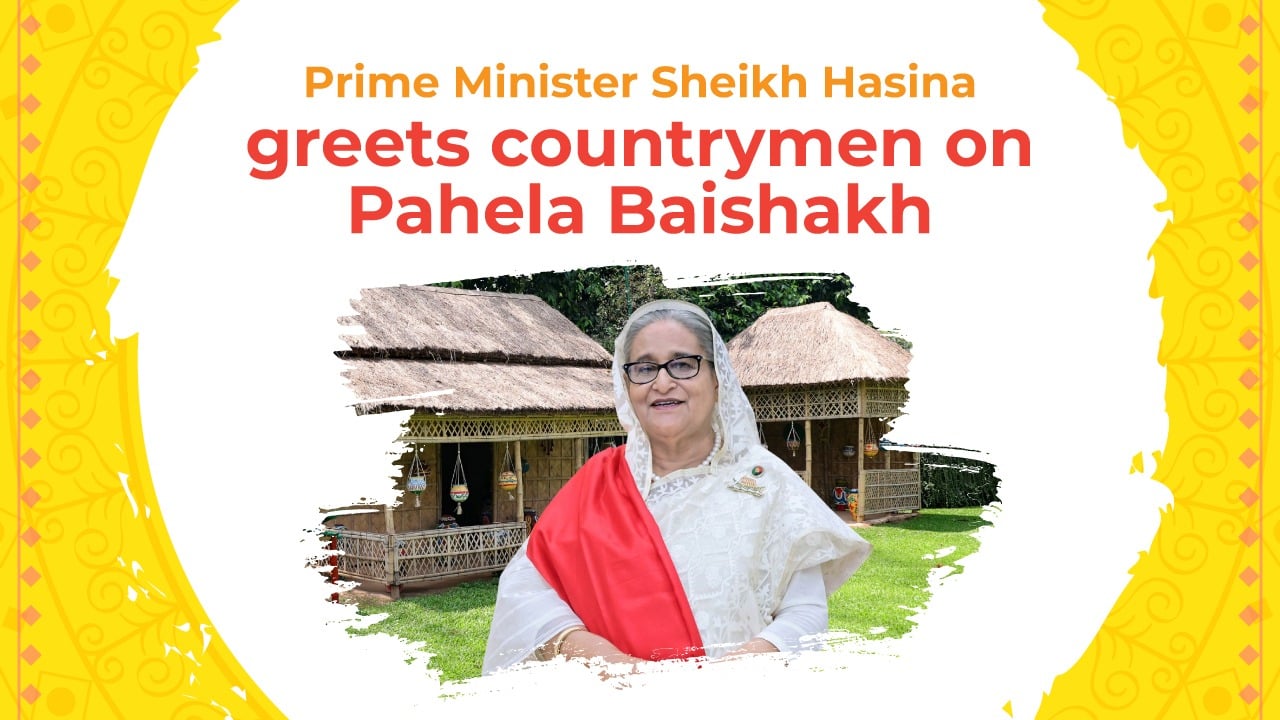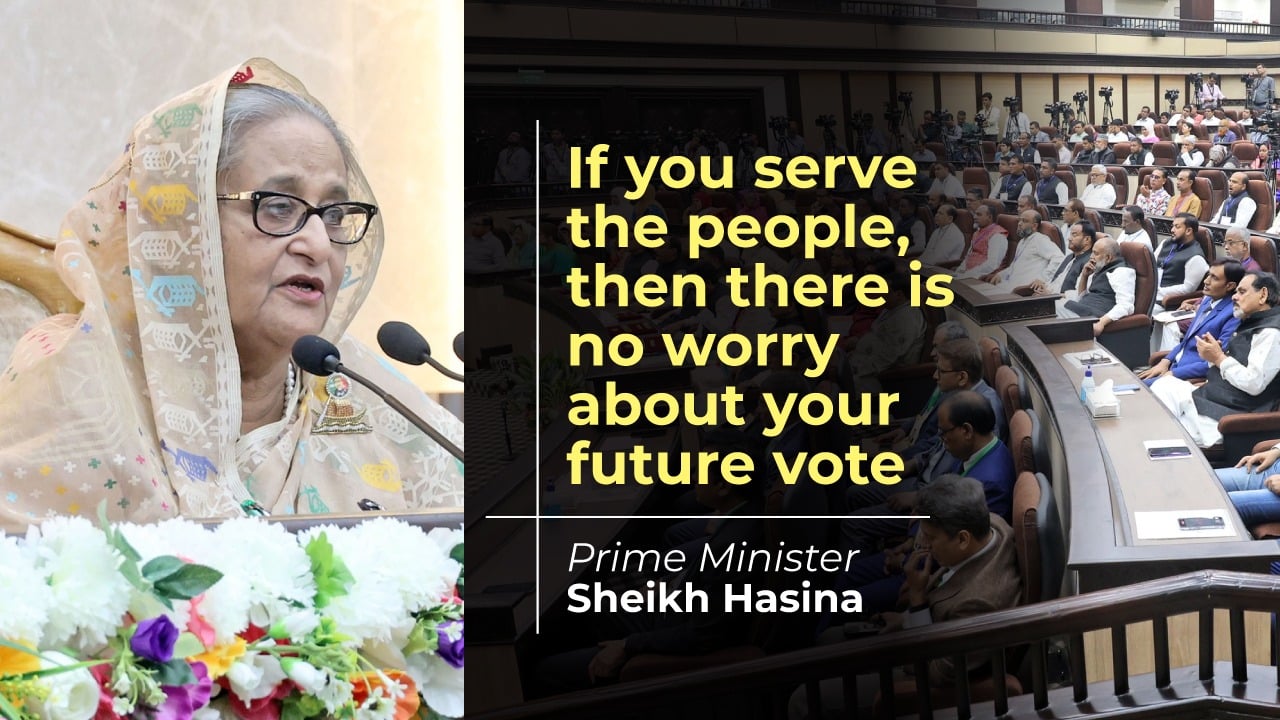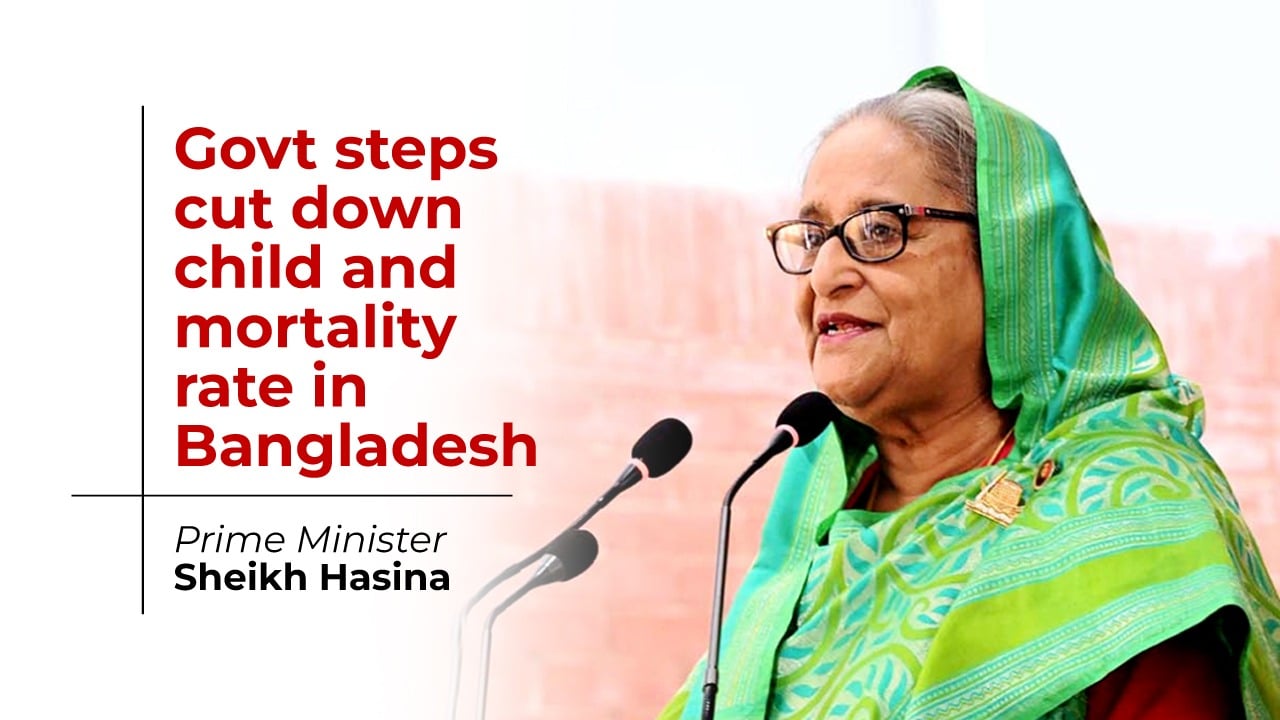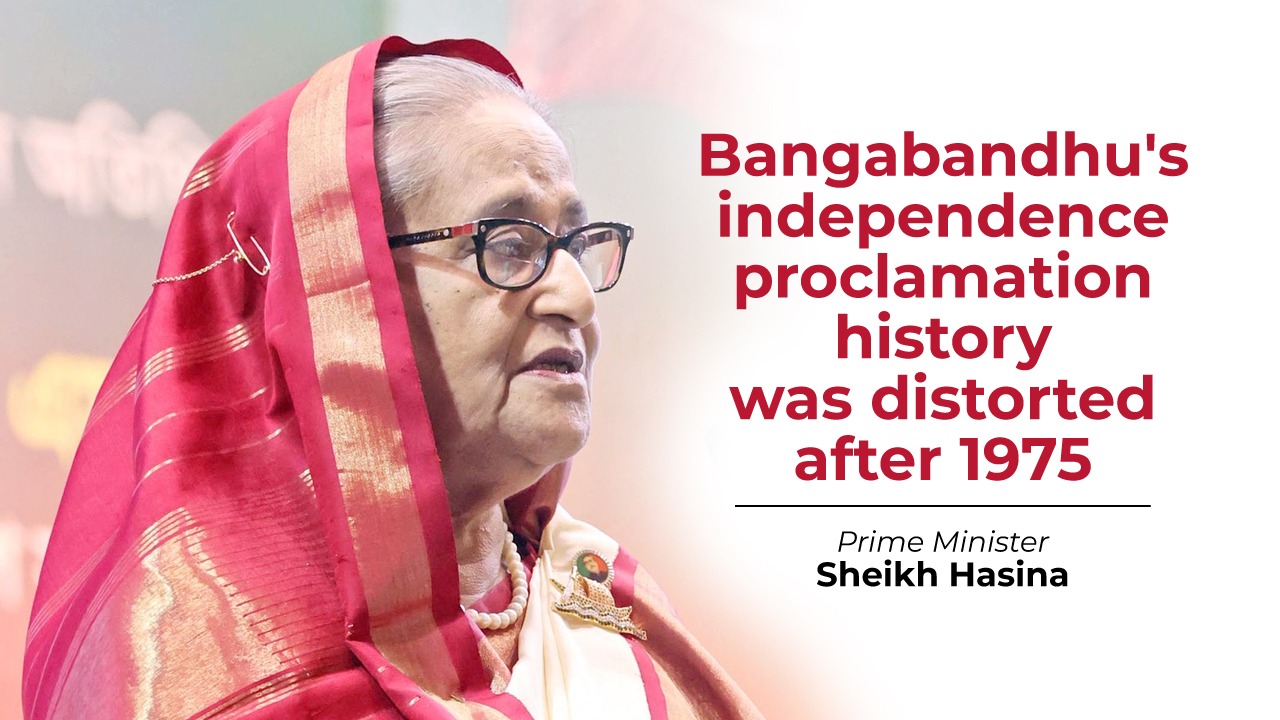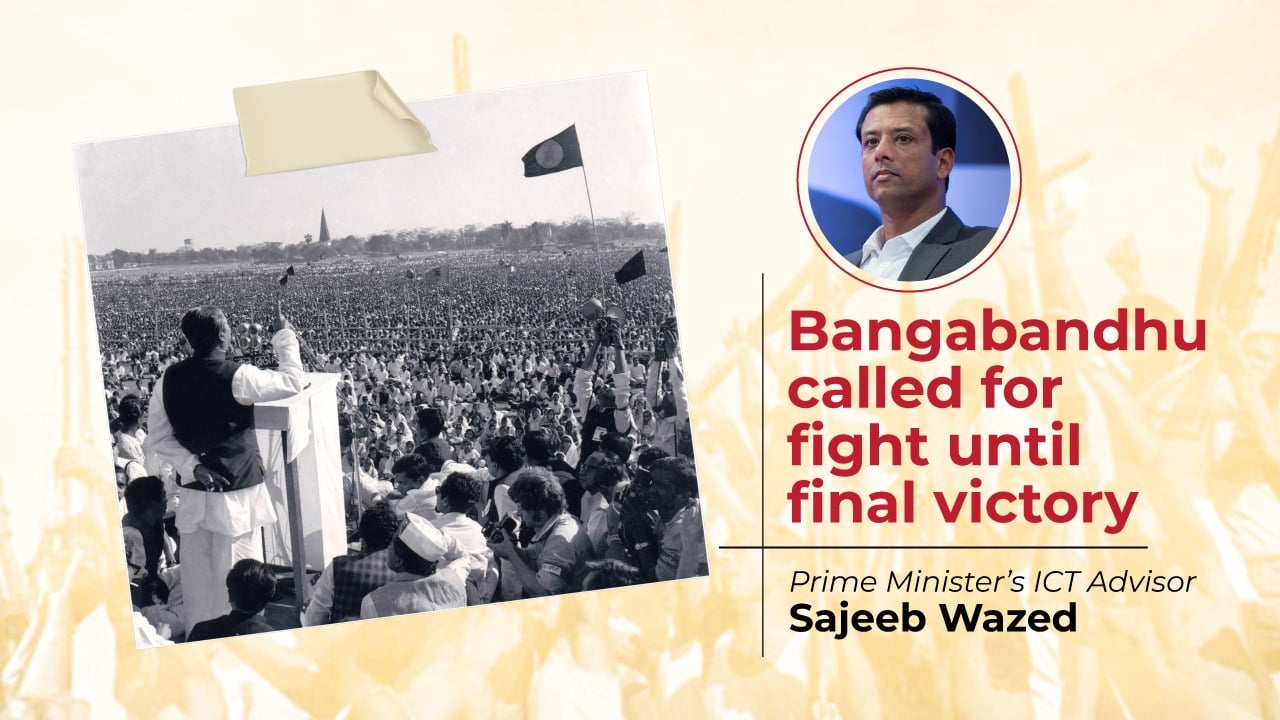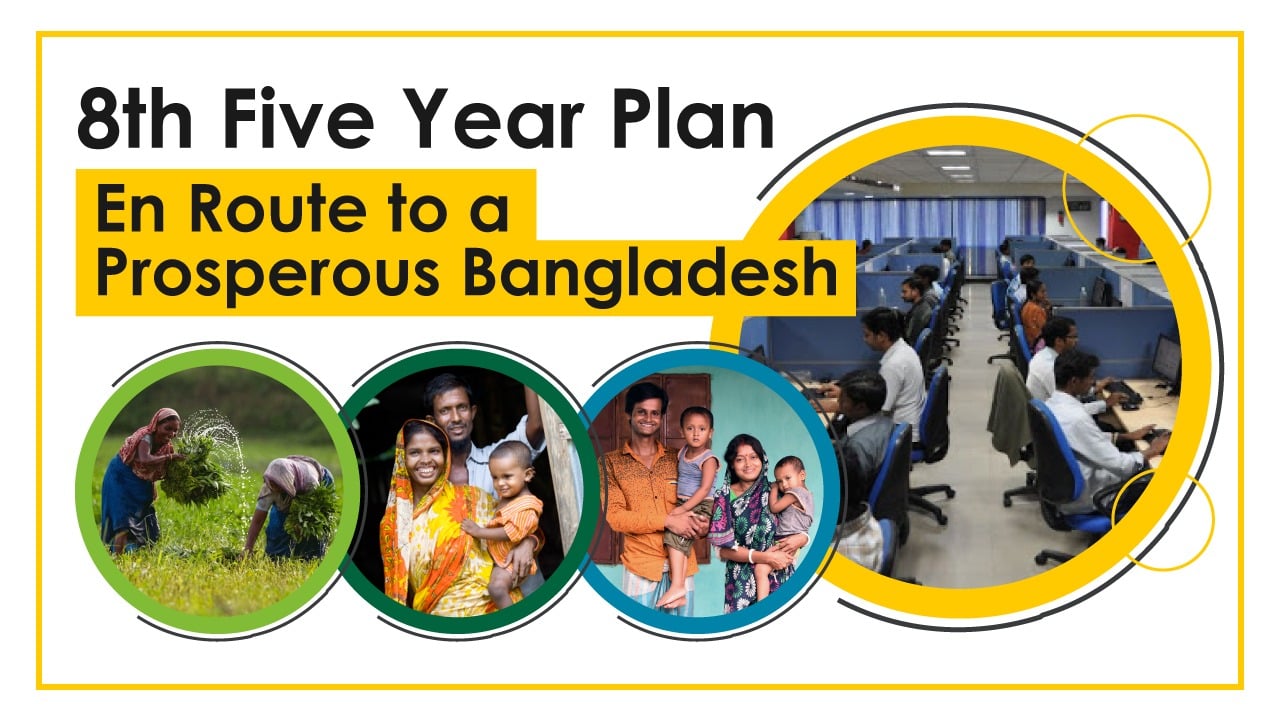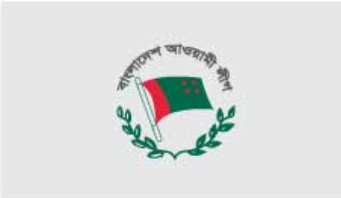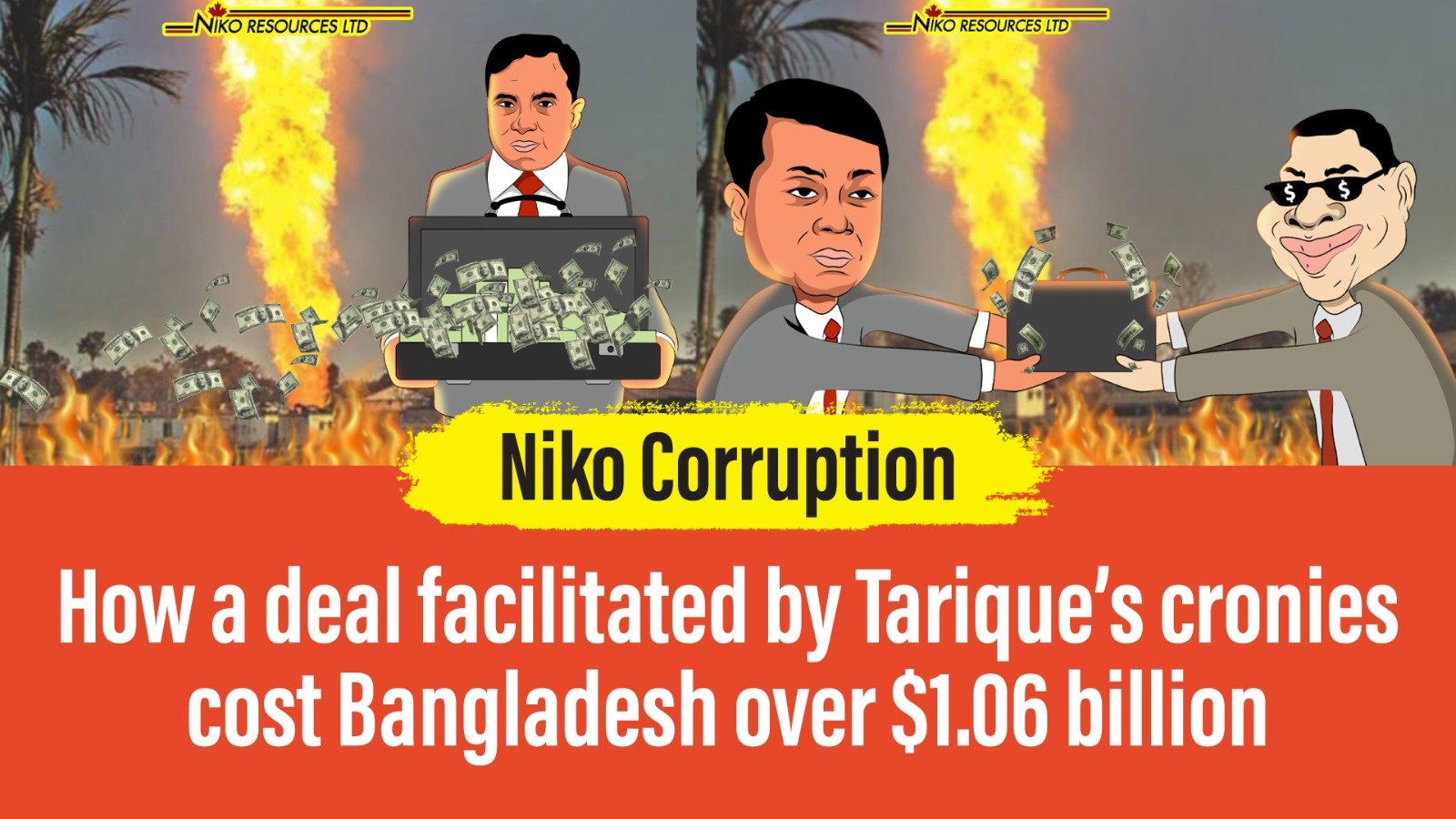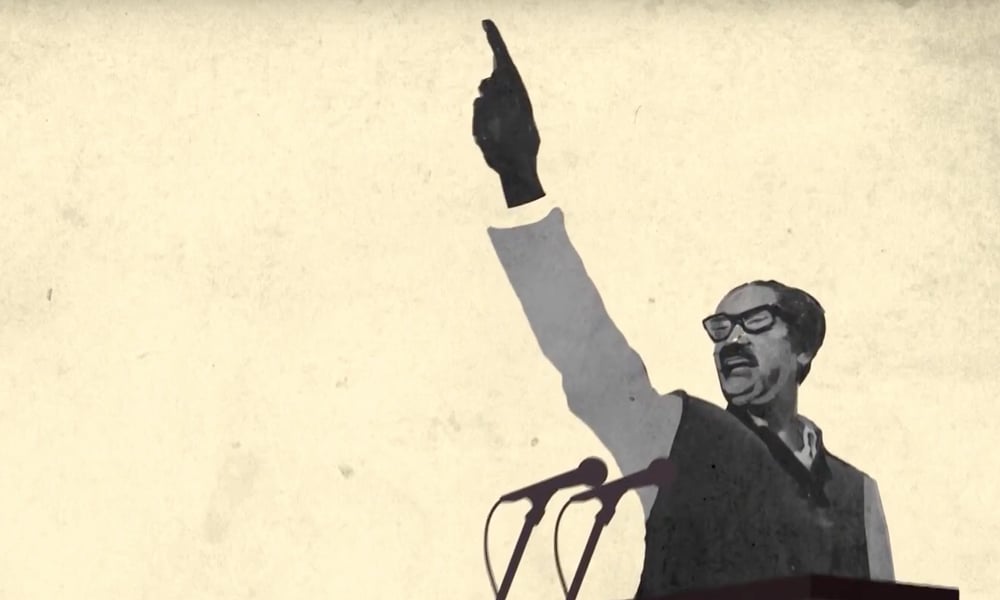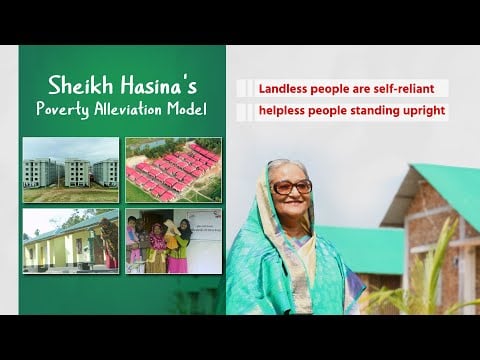3232
Published on January 8, 2015The fact that the current government has massive public support for its activities was manifested in the public opinion polls conducted by the leading English daily newspaper Dhaka Tribune. Published in September 2014, the polls clearly showed that the current Awami League (AL) government led by Prime Minister Sheikh Hasina is enjoying overwhelming popular support.
75% of the respondents surveyed were satisfied with the current government’s first 6 months in power following the January 5 elections. A significant majority, around 70% of the respondents, felt that the country is headed in the right direction. A majority, 53%, of the respondents voiced their support for the current government to complete their five years tenure. An overwhelming majority of respondents, nearly 78%, expressed their objection to any forthcoming agitation movement by the opposition Bangladesh Nationalist Party (BNP). Unfortunately, not heeding the public opinion in this regard, BNP is conducting a violent agitation movement as we speak.
In a series of special reports, we will look at the state of the various sectors of the country in the one-year which has now passed since January 2014 under the leadership of the Awami League government. In this first of these special reports, we will look at the achievements of the government as regards the economy, trade and investment, communications and infrastructure, and power and energy sectors of the country in 2014.
Economy, Trade and Investment
Bangladesh kept up its momentum of achieving sustained economic growth under the Awami League government in 2014. This was appreciated by the public at large, demonstrated by a survey conducted by the Washington based Pew Research Organization in September 2014. According to that research, 71% of Bangladeshis were happy with the economic health of the country in a show of confidence on the current Awami League led government’s economic management of the country. Demonstrating a mood of optimism, contrary to the global trend as revealed by similar surveys on other countries, 66% of Bangladeshis expected the economic situation in their country to further improve over the course of the next 12 months.
Per Capita Income: Due to the government’s adoption of such measures as new pay scales, allowances, various income generating activities, increase in minimum wages, expansion of social safety net schemes and other interventions, the real income and purchasing power of the people have increased substantially. Halfway through 2014, the per capita income stood at US$ 1,190, increasing from US$ 1,044 halfway through 2013. The current government has targeted to elevate the per capita income to US$ 2,000 by 2021.
Growth in export earnings: Bangladesh’s export earnings rose by 14% to US$ 27.5 billion in the 11 months of the calendar year 2014 compared to the same period last year. According to Export Promotion Bureau (EPB), Bangladesh earned US$ 27.5 billion from January to November 2014, which was US$ 24.17 billion for the same period in 2013. During the same period, Bangladesh’s export earnings from the RMG sector rose by nearly 5% to US$ 22.25 billion in January-November 2014 compared to the same period last year. According to the EPB, Bangladesh fetched US$ 22.25 billion in 11 months of 2014, which was US$ 21.22 billion in the previous year. According to latest data, in the first half of current fiscal year, that is, from July to December 2014, Bangladesh earned US$ 14.91 billion, posting a 1.56% growth from the same period of the last fiscal year. In December, export earnings grew by 4.33% compared to corresponding month of last fiscal.
In October 2014, the government finalized the new draft Export Policy 2015-2018, which aims to increase annual exports earnings to US$ 50 billion by the year 2018. The draft policy offers various incentives to help broaden markets and products base as well as make the export system modern and liberal in conformity with World Trade Organization (WTO) rules. The commerce ministry is currently holding a series of meetings with stakeholders to finalize the draft policy and send it to the Cabinet for final approval.
In November 2014, the Bangladesh government announced that it would form a business council with ambassadors from the EU nations and trade body leaders to boost exports to the European countries. The proposed council would help boost trade further and work towards removing barriers to trade and to help Bangladesh achieve middle-income country status faster. Bangladesh's export earnings currently stand at above $30 billion, half of which comes from the EU. The EU also wants to further increase imports of garments, pharmaceuticals, ships and ICT products from Bangladesh as they think the country is an important sourcing destination for them.
Record foreign exchange reserves and remittances: The country's foreign exchange reserve marked 24% increase in the outgoing year 2014 while the remittance inflow rose by nearly 10%. Both are major indicators of a country’s economic and financial health, and stand testament to Bangladesh’s consistent economic performance under the Awami League government in 2014. According to the latest data, the country’s foreign exchange reserves stood at US$ 22.34 billion on December 23, 24% higher than US$ 18.04 billion recorded on December 23, 2013. The reserves reached an all-time high of US$ 22.38 billion on December 18, 2014. As regards, remittances, by December 26, Bangladeshi people living overseas sent home US$ 14.71 billion against US$ 13.22 billion last year, marking 11.27% rise on year-on-year basis. The country also saw the highest ever inflow of monthly remittance in July this year with US$ 1.49 billion.
Declining inflation rate: Throughout January 2014, the inflation rate in Bangladesh maintained a downward trend. The year started with 7.5% inflation rate in January 2014, which consistently declined month-on-month, and reached a 23 months low in October 2014 with 6.6%. In his budget speech given in July 2014, at which time the inflation rate stood at 7.04%, the Finance Minister AMA Muhith said the government is aiming to bring down the rate below 7%. Thus, the government has been able to succeed on its own target in this regard. The government is also hopeful of bringing down the rate of inflation to below 6.5% by the end of the 2014-15 fiscal year, that is, by July 2015. In fact, the target was achieved in the immediate following month with inflation rate standing at 6.21% by the end of November 2014, and at 6.11% by December 2014.
Demand for Bangladeshi products on rise: In a report published in October 2014, the World Economic Forum (WEF) stated that demand for Bangladeshi products is on the rise both in the domestic and international markets. Between June 2013 and June 2014 the growth of demand for Bangladeshi products rose from 42% to 48% in the international market and from 50% to 55% in the local market. WEF thinks at the end of the current fiscal year the trend will remain positive.
Rising foreign investment: Since Awami League came to power in 2009, Bangladesh has experienced consistent growth in the inflow of foreign investment in the last six years. Foreign direct investment (FDI) rose 24% year-on-year to US$ 1.6 billion midway through 2014, compared to year before. Halfway through 2013, FDI stood at US$ 1.29 billion, itself marking a 13.75% rise from the preceding year’s FDI worth US$ 1.14 billion. Bangladesh saw large scale investment in 2014 in such sectors as manufacturing and service, power, energy, infrastructural development and ICT.
In the trade and investment scene, Bangladesh witnessed a positive 2014. In September 2014, it transpired that trade confidence on Bangladesh is one of the highest globally according to HSBC’s Trade Confidence Index. The Index showed that trade confidence on Bangladesh rose sharply, by 38 points in 6 months till September 2014, which was the second highest among 23 countries globally. The Index reveals that Bangladesh's score increased to 141 in the first half of 2014, from 103 in the second half of 2013. Bangladesh outpaced several countries including India, Turkey, China, UK, Brazil, Canada, Malaysia, USA, Singapore, Germany, Hong Kong, Australia and France. The report also forecasted steady growth for Bangladesh’s share of garments & textiles exports, rising from 2.8% in 2010 to 3.8% in 2020, boosted by recent initiatives to further strengthen its health and safety standards.
2014 saw the Awami League government take a number of decisions and/or actions to boost trade and investment in the country. Some, but not all, of them are listed below:
Industrial Parks and Other Facilities for Apparel Sector: Readymade garments (RMG) sector is Bangladesh’s most profitable sectors with highest exports earnings. The government has set itself the target to facilitate the earning of $50 billion by the year 2021. As part of facilitating that target, the government in 2014 announced the construction of a garment industrial park in Baushia of Gazaria, Mymensingh. Apart from accommodating industrial units, the proposed park will also include a 300 MW power plant, central effluent treatment plants, container terminals and dumping yards. Additionally, the government in December 2014 announced that it will form a "knitwear village" in Narayanganj, for which it will allocate 1000 acres of land. Furthermore, progress has been made as regards ‘woven garments maker’ village, with 482 acres of land being made available for the purpose in 2014.
Special Economic Zones: In 2014, Bangladesh entered into agreements or discussions for creation of as many as 18 exclusive economic zones for such countries as Japan, China, India, Malaysia etc. to attract specific investments from large industrial and economic powerhouses. 2014 also saw the process to create country’s first private economic zone start. In November 2014, it was announced that the first such private economic zone will be built by AK Khan Company over 200 acres of land in Narshingdi district. In December 2014, the government announced special incentives for the investors in the new economic zones including, inter alia, tax holiday for investors and their employees and duty-free import of vehicles.
In November 2014, the Foreign Grant Regulation Act 2014 was finalized, which aims to attract more FDI in the economic zones, especially from China, Japan and India primarily through relaxing tax and citizenship issues. Under the new law, there will not be any limitation on the amount of inward FDI in the economic zones; local investors will be able to take over assets and industries owned by foreign firms; foreign investors will enjoy elongated tax holidays and duty exemptions; and be able to repatriate their entire income.
FTAs: in 2014, Bangladesh saw interest from a number of countries for signing bilateral free trade agreements (FTAs). In December 2014, China has proposed signing a Free Trade Agreement (FTA) with Bangladesh to promote trade between the two countries. To this, Bangladesh has responded positively, promising to look into the matter seriously after due consideration. Discussions have also been held with Sri Lanka, Turkey and Malaysia for negotiations on bilateral FTAs with these countries.
Joining AIIB and MoU with Bank of Tokyo: In October 2014,Bangladesh and 21 other nations have signed an inter-governmental memorandum of understanding (MoU) to form the Asian Infrastructure Investment Bank (AIIB). The new multilateral lender would fund construction of roads, railways, power plants and telecommunications. It is expected that joining this bank would greatly benefit Bangladesh’s current gaps in funding large-scale infrastructural projects. In December 2014, Bangladesh signed a Memorandum of Understanding with Bank of Tokyo-Mitsubishi UFJ to facilitate inflow of Japanese investments in Bangladesh and foster business partnerships between entrepreneurs of the two countries. Under the arrangement, Bangladesh government will cooperate with the Bank to provide Japanese entrepreneurs with information related to foreign direct investment (FDI) opportunities in Bangladesh, and communicate about the country’s upcoming industrial projects. In return, the Bank will provide every possible support to bring investment into Bangladesh.
Investment interest from top global fund managers: In 2014, Bangladesh saw interests of investments from such top global fund managers as Glodman Sachs, Deutsche Bank AG and Merrill Lynch. The fund managers have expressed their interest to manage Bangladeshi sovereign bonds in the world market. Industry insiders say factors such as stable economic outlook, relative calm in the political field and vast youth population are attracting the top global fund managers to set their eyes on Bangladesh.
Communications and Infrastructure
In order to prioritize large scale infrastructure, communications and power projects, right after formation of government in January 2014, six projects were identified as ‘fast-track’, supervised directly by a committee headed by the Prime Minister herself, earmarked for speedy implementation. They are: Padma Multipurpose Bridge, Rooppur Nuclear Power Plant Project, Rampal Coal-fired Thermal Power Plant, Dhaka Mass Rapid Transit Development Project (Metro Rail Project), Sonadia Deep Seaport in Cox’s Bazaar and Liquefied Natural Gas Terminal Construction Project. Recently, two important projects have been added to the list, namely, country’s third seaport at Payra and Matabari energy hub in Cox’s Bazar.
Padma Bridge: Padma Bridge is the country’s largest infrastructural undertaking so far. More than 19 districts will be served by it. When the bridge comes into operation it is estimated that it will boost the GDP growth by 1.23%. The government has set the target of completing the project by 2018. Around 3,500 people are currently working for the bridge, with 500 of them from China and the rest from Bangladesh. Over 200 Chinese engineers, officials and laborers are now working for the project. In January and February, another 6,000 workers will join in.
According to the Bangladesh Bridges Authority (BBA), around 16% of the project has been implemented until November 2014, with the processes of awarding work orders to consultants and contractors for the six key components of the bridge having been finished. 28.5% of the approach road at the Mawa point and 20.5% of that at the Jajira point have been completed and the development of the service area is moving fast. In December 2014, works for the infrastructure of the main bridge, river training and consultancy started in full swing and progressing quickly.
A number of ancillary benefits have also accrued from this project, especially in the communications in the three districts of Munshiganj, Shariatpur and Madaripur. For instance, the Dhaka-Mawa Highway has been proposed to be upgraded to a four-lane highway. The Mawa-Munshiganj road has been broadened to accommodate access to the new ferry terminal at Shimuliya. Economic uplift of the neighbouring regions are already being felt, as real estate is seeing improved prices and jobs in construction are being created for thousands.
Dhaka Metro Rail Project: Process for constructing Bangladesh’s first mass rapid transit (MRT) system, commonly known as metro rail, started officially in April 2014 with Cabinet’s approval of the Metro Rail Act 2014. The alignments and designs for the 16 stations to serve the urban rail network were announced in September 2014. The detailed designs are expected to be finalized by July of this year. Eight tenders would be floated in six packages in 2015 for the 21 km network, which would be followed by the physical construction of the system. The project is expected to be complete within four years.
Dhaka Elevated Expressway: Works for the large infrastructural undertaking, Dhaka Elevated Expressway started in October 2014. The 20-kilometer long expressway, connecting Dhaka airport with Jatrabari area, is being constructed under a public-private partnership (PPP) project involving a total cost of around US$ 1.1 billion. The expressway construction will be completed within next three years and five months according to the project implementation period. In addition to providing a much-needed increase in traffic capacity, the Expressway will relieve existing overloaded roads and avoid adding congestion to existing facilities.
Third Seaport at Payra: In the last week of December 2014, the government announced conducting a feasibility study with its own finance on the planned third seaport of the country at Payra, Kuakata. In December, London-based firm HR Wallingford was appointed to conduct the techno-feasibility study of the proposed seaport. The port, the work for which started in November 2014, will be built under public-private partnership. The Ministry of Shipping, for developing the necessary infrastructure and facilities of the new port, has undertaken a US$ 109.8 million project in this regard. Under this project, 6000 acres of land will be acquired for the port, a five-storied administrative building will be constructed, some vessels and survey boats will be purchased and a 5.6 km long approach road will be built along Patukhali-Kuakata highway. The operation of the seaport is expected to begin by 2017 after completion of the necessary works.
Deep-sea port at Sonadia: In September, the International Finance Corporation (IFC), private sector financing wing of the World Bank Group, expressed interest to offer advisory support to Bangladesh in building a deep-sea port at Sonadia, Cox’s Bazar. To that end, they have already submitted a concept paper to the Ministry of Shipping for development of the proposed port. IFC has proposed to draw up a comprehensive scheme outlining the measures to be undertaken by the government for the development of the said port.
Modernizing railway: As part of the AL government’s policy of modernizing Bangladesh’s rail communications and the Prime Minister’s recent directive to replace all meter-gauge rail lines with double gauge tracks, the top economic body of the government ECNEC has approved a mega project worth US$ 831.2 million to construct a new Akhaura-Laksham dual-gauge railway track. Land acquisition has been completed for setting up double lines on the Dhaka Chittagong railway. Required land was acquired to build the Chittagong-Coxs bazaar railway.
As many as 84 intercity and mail trains have been introduced on different routes while the routes of 24 trains were extended. The government undertook different polices to boost up railway services to the people. Aimed at transporting people quickly over short distances, the government procured 20 Diesel Electric Multiple Unit (Demu) trains also known as commuter trains. The commuter trains have started plying on different rail tracks. The digitization process of railway is on course. A new intercity train has been launched on the Mymensingh-Chittagong route.
River communications: in 2014, Bangladesh Inland Water Transport Corporation (BIWTC) added a new vessel to its fleet with the aim of improving passenger service. Built at local shipyard, MV Bangali, is now in operation. The second new watercraft MV Modhumoti is likely to join the fleet soon. Construction of nine ferries and seven landing pontoons were completed. Before the end of 2015, eight more ferries and a new pontoon will be constructed. The process of digitizing the operations of BIWTA has started. Introduction of vehicle tracking system has helped monitoring the movement of water vessels. Various steps taken by the government has enabled the second largest port in the country at Mongla to become a commercially profitable one. Digitization of the port has also been achieved. Since 2009, six waterbuses, four sea trucks, 2 landing pontoons and two ships have been constructed, taking the total number of newly introduced water vessels to 30. Massive dredging project has been undertaken to make all river routes navigable.
New Flyovers: In December 2014, the government undertook a $129.37 million project to build 13 km long Shantinagar-Jhilmil flyover in Dhaka. The 13 km long Shantinagar-Jhilmil flyover will be constructed with a view to establishing a direct and uninterrupted link with the capital Dhaka. Appointment of project director and other necessary groundwork are underway, with a view to completing the project by the year 2019. The government is envisaging materialization of the project under Public-Private-Partnership (PPP).
In December, Prime Minister Sheikh Hasina inaugurated the construction of the AkhtaruzzamanChowdhury Flyover in Chittagong. The 5.2 km long 4-lane flyover will connect two busy points of Lalkhan Bazar and Muradpur in the port city and will be built at a cost of $60 million. Chittagong Development Authority (CDA) and a China-Bangladesh joint venture entity called “Max Renken JV” will build the mega project, financed completely by domestic funds. Likely to be completed by June 2016, this is the AL government’s second flyover project in Chittagong, after the Bahaddarhat flyover.
Power and Energy
In 2014, the Awami League government continued its policy of giving top priority to the development of the power and energy sectors considering its importance in the overall development of the country. Right after assuming office in 2009, in order to address the debilitating power shortages plaguing Bangladesh from 2001 onwards, the Awami League-led government formulated the forward looking Power Sector Master Plan 2010. It should be noted that power generation capacity more than doubled from 4,942MW in 2009 to 11,265MW currently, with around 68% of the population having access to electricity. Furthermore, the government has increased the number of power plants, transmission lines and distribution lines.
Per capita power generation has increased. The country has the highest rate of solar home system installations in the world. The number of irrigation pumps has gone up and the number of consumers of electricity has also increased during the tenure of the AL government. System losses have been significantly reduced during this period. Around US$ 5.2 billion was invested into the sector to set up 65 power plants from 2009 to 2014.In 2014, following in the past 5 years of success, the government entered into a number of international agreements to construct more power plants and explore new energy sources. The government has set itself the goals of providing electricity to all by 2021, and generates additional 9,600MW electricity by 2018 under short, medium and long-term plans.
Complete Power Hub at Matabari: The government has started the process for a complete energy hub in Matabari area of Maheshkhali in Cox’s Bazaar. The government has planned to turn Maheshkhali into the country's energy hub by building eight to ten coal power plants there generating 10,000 megawatt, which is more than what the country produces now. Huge land has already been acquired to that end. In the first phase, the government plans to install four 1,200MW plants each. In order to ensure the smooth monitoring and speedy implementation of the project, the government has listed it as one of the ‘fast track’ development projects.
Progress of the mega power project, which is funded by the Japan International Cooperation Agency (JICA), is going on at full speed. The government has acquired already 1,500 acres of land, and the processes of fencing of the lands and appointment of consultant are underway. The cost of this project is estimated to be in the US$ 4.6 billion mark, making it Bangladesh’s largest power infrastructural undertaking. As part of this project, Bangladesh government has signed two MoUs with a Malaysian consortium for the construction of two coal-based power plants with a combined power generation capacity of 1320 mega-watts (mw) at Maheshkhali, Cox’s Bazar. 11,000 tonnes coal per day will be required for the proposed plant, which will be imported from Indonesia, South Africa, Australia and Mozambique.
Rampal Coal Power Plant: Substantial progress has been made regarding the planned 1320 MW ultra super critical coal fired power plant in Rampal, Bagerhat. The project that has received final approval from the government’s top economic and policymaking bodies, will be built at a cost of $1.82 billion. Construction of the physical parts of the plant is expected to start in early 2015. A joint venture company named “Bangladesh India Friendship Power Company” has been formed by Bangladesh’s BPDB and India’s NTPC to implement this mega power project by December 2018, which will use the most sophisticated technology to generate power from imported coal.
Rooppur Nuclear Power Plant: Preparatory works of Bangladesh’s first nuclear power plant at Rooppur is progressing at a satisfactory speed. Russia’s Atomenergoproekt, sister concern of state-run Rosatom, have floated tenders for engineering survey, environmental monitoring and development of project documents for Rooppur Nuclear Power Plant (RNPP). The contract value has been estimated at US$ 18.2 million and the selected bidder will have to complete the work by September 15, 2015. Construction of the RNPP is expected to start by the end of 2015. As part of the RNPP, two nuclear power plants of 1000 MW capacity each will be designed, constructed and commissioned by Russia for Bangladesh at Rooppur, Pabna.
New power plants at Bibiyana and Barapukuria: In December 2014, Bangladesh government has signed a deal with two foreign companies from Spain and Korea, to set up a natural gas based 383 mw combined cycle power plant at Bibiyana, Sylhet to meet the target of electricity generation set for the year 2021. According to the deal, the project cost has been estimated at US$ 388.96 million and will be financed by state run Bangladesh Power Development Board (BPDB) from its own resources. The power project will get gas directly from the Bibiyana gas field, and hence the electricity production cost in the project will be only TK 1.13 kilowatt per hour (kw/h). The project’s gas turbine, steam turbine, generator and other main equipment will come from Germany, Belgium, USA, Spain and China. The plant’s energy efficiency is expected to be 53.37%. In October, the government announced plans to set up a 1,320MW coal-based power plant at Barapukuria coal mine in Dinajpur. The plant is likely to be set up at the northern part of Barapukuria and is expected to be complete within five years.
Prioritizing LNG: In October, the government embarked on the mission of setting up a Liquefied Natural Gas (LNG)-based combined cycle power plant, first of its kind in the country, in Khulna. Under an agreement with Gas Authority of India Limited (GAIL), this 750-850 megawatt capacity power plant will be implemented by 2021. The works on Bangladesh’s first LNG is also underway. The government has decided to construct LNG terminal at Moheshkhali by 2016. The LNG terminal having capacity of 1,38,000 cubic metre LNG would be built under Build-Own-Operate-Transfer (BOOT) basis. The terminal is expected to supply 500 million metre standard cubic feet per day (mmscfd) from the floating storage and re-gasification unit (FSRU). The government has signed a deal with Astra Oil and Excelerate Energy Consortium to build the floating storage and FSRU terminal at its own cost at Moheshkhali Island in the Bay of Bengal.
Strengthening power transmission: In October, the government has signed a $30 million deal with Swiss company ABB for strengthening Bangladesh’s power transmission system. Under the deal, 4 new substations will be built and 6 substations will be expanded to enhance transmission capacity and boost power supplies. It is estimated that 450,000 households will receive new power connections through this program, and carbon emissions be reduced by almost 2.5 million tons per year.
Energy Exploration: In February 2014, the government awarded two shallow water blocks in the Bay of Bengal to Indian state-run oil company ONGC Videsh to explore gas and oil. In March 2014, State-owned Petrobangla signed a production-sharing contract (PSC) with Santos-Kris Energy, an Australia-Singapore joint venture, for hydrocarbon exploration in the shallow sea Block-11 in the Bay of Bengal. After Bangladesh secured large amounts of marine territories in its arbitration with India, in December 2014, a joint venture between Statoil and ConocoPhillips has been awarded the task of exploring oil and gas in two deep water blocks in the Bay of Bengal. Owing to the energy potential unleashed by the recent maritime wins against India and Myanmar, foreign policy publication The Diplomat has termed Bangladesh as Asia’s next energy superpower (November 14, 2014).
Renewable Energy:Bangladesh has successfully installed 3 million solar home systems (SHSs) over the past few years. Bangladesh has one of the fastest installation rates of SHSs around the world. Owing to the success, the government now aims to install 3 million more SHSs in the next 3 years. To ensure electricity for all by 2021, the government aims to increase its power generation capacity to 24,000 MW, of which 10% would come from renewable energy sources, including solar power. In December, the government took an initiative to boost use of renewable energy by introducing the first ever feed-in-tariff system. The move is designed to allow companies to commercially install solar plants on large government buildings.
As part of the initiative, Rahimafrooz Renewable Energy Ltd (RREL) has installed a battery-free solar power plant on the roof of Bangladesh Secretariat’s Building-2, on over 7,000 square feet of space. Under the 20-year contract, the plant would generate 50-kilowatt electricity and feed it to the national grid. The government aims to generate up to 2,000 MW power by installing solar panels on roofs of different government establishments in Dhaka and Chittagong.
In May 2014, a deal was signed for the construction of a 60-megawatt wind turbine power plant in partnership in the coastal belt of Cox's Bazar to generate green electricity. US-DK Green Energy (BD), a joint venture between USA, Denmark and Bangladesh will build the plant at a cost of $120 million, which is expected to begin commercial operation by May 2015. It will boost the production of renewable energy, which now accounts for 2 percent of total electricity generated in the country. With 2MW of electricity generation capacity each, 30-35 wind turbine generator units will be established on the shores of the Bay of Bengal, about 5km from Cox's Bazar town. Once implemented, the project will give way to large-scale wind energy projects in Bangladesh.
A biomass power plant will be set up in Chittagong soon to generate 10 MW of electricity with an initial investment of $16 million. The plant will be set up by two private companies from Bangladesh and Malaysia and will generate electricity from biomass by using municipal solid wastes. The companies will go for more biomass power plants in Dhaka and other cities after necessary feasibility studies if the pilot project turns out to be successful. The municipal authorities will collect the wastes as usual and mix it up for use and subsequent power generation. Solid waste includes household and commercial wastes collected either in solid or semisolid form.
Bangladesh is also in serious discussion with its regional neighbours Bhutan and Nepal for importing hydropower electricity from these countries. On the regional scene, Bangladesh played a robust role in the signing of the agreement for a regional power grid during the recently concluded SAARC Summit in Kathmandu, Nepal. Bangladesh is currently importing around 500 MW of power from India, with talks ongoing for the import of further 500 MW.
